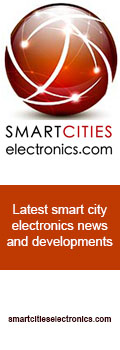binder offers a broad portfolio of M12 panel mount connectors
binder offers a wide range of M12 panel mount connectors, the portfolio covers a wide variety of codings, connection types, materials and fastening solutions, thus offering design freedom for integration into devices and systems.
‘With our M12 panel mount portfolio, we offer a suitable solution for almost every automation application – from power supply and industrial data communication to sensor integration,’ says Product Manager Ron Hautzinger. ‘Our customers benefit not only from the variety, but also from the consistent quality and the ability to obtain system solutions such as pre-assembled cables or PCB assembly from a single source.’
M12 panel mount connectors from binder are used wherever signals, data or power need to be safely integrated into a device or housing. Typical applications can be found in manufacturing and automation technology, in control cabinets, sensors, drives or in railway and building technology.
The panel mount solutions are also ideal for applications in robotics – for example on joints for connecting sensors – in automated guided vehicles, conveyor systems and logistics systems as well as in agricultural machinery for harsh environmental conditions, e.g. for the decentralised control of lighting, air conditioning or access systems.
Thanks to different codings (A, B, D, K, L, S, T and X), numerous protocols and requirements can be covered. For example, A-coded variants are suitable for CAN bus & IO-Link applications, while B-coded variants are used for Profibus applications and D- and X-coded panel mounts have been developed for Industrial Ethernet protocols such as PROFINET. K- and S-coded variants are predestined for AC applications up to 630 V AC, L- and T-coded solutions for DC up to 63 V DC.
In addition to straight and angled versions, the product variants also include different connection types – from stranded wires to soldering and THT technology through to THR and SMT, which enable fully automated PCB assembly. Materials such as stainless steel, plastic or metal ensure design flexibility. Protection classes up to IP69K can be realised.
Technical challenges such as efficient heat dissipation, compact integration with limited installation space and optimised shielding for compliance with EMC specifications are also faced in internal product development. These aspects are continuously incorporated into the further development of the portfolio in order to fulfil future technological and normative requirements.




